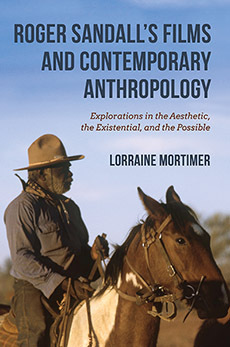The New Criterion, April 2011
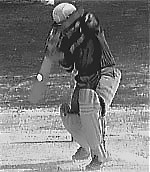 All you see is a smudge — a white smudge if that makes sense — but the whole crowd knows what it means. The player has struck the ball well and cleanly and may continue to play. This is Hot Spot, a new high-tech way of getting more and better information for sporting decisions in the game of cricket. Cameras sense and measure the heat that comes from the thumps and bangs of play, and the spot is white because the computerized infrared image left by the ball is negative, white on a black or grey ground.
All you see is a smudge — a white smudge if that makes sense — but the whole crowd knows what it means. The player has struck the ball well and cleanly and may continue to play. This is Hot Spot, a new high-tech way of getting more and better information for sporting decisions in the game of cricket. Cameras sense and measure the heat that comes from the thumps and bangs of play, and the spot is white because the computerized infrared image left by the ball is negative, white on a black or grey ground.
Time was when cricket umpiring relied on the human eye. Umpires standing at each end of a cricket pitch, 22 yards long, had to guess whether the ball had actually struck the bat, or the stumps, or the batsman’s leg, before giving a decision “out” or “not out”. But some umpires seemed to have worse eyes and ears than others and mistakes were made. This didn’t matter when the game was synonymous with the decorum of leisurely afternoon play on an English village green. But that was long ago. At international cricket matches today a hundred thousand fans produce constant uproar and it’s a matter of life and death — though some say it’s more important than that.
Adjudicating has assumed diplomatic importance, the very latest science is employed, a billion vicarious spectators on the Indian subcontinent hang breathlessly upon news about the score, and it’s hardly surprising that the four fallible eyes of the all-too-human umpires are now backed up by infrared cameras — with a third off-field umpire checking what the cameras show. The advent of all this technology has not been without debate. But most fans, I think, would agree that the decisions of even diligent umpires are affected by their states of mind, while infrared photography, on the other hand, provides the greater objectivity that international cricket now requires. It’s as simple as that.
Or maybe not. Seeking more information I went on the Web, and within seconds had found just the book I needed — Objectivity by Lorraine Daston and Peter Galison. Daston is a distinguished American thinker whose work (I quote from Wikipedia) “has long defined the cutting edge of research into the history of science.” Galison is the Pellegrino University Professor in History of Science and Physics at Harvard. He has made a film on the hydrogen bomb for the History Channel, and made another film criticizing government secrecy shown at the 2008 Sundance Festival.
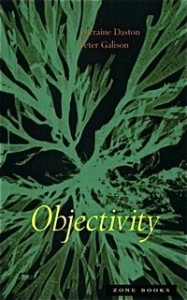 Well, talk about luck! There’s hardly a name since the dawn of systematic human thought that goes unmentioned in their treatise, from Plato to Bruno Latour. But the funny thing is, the more you read of its 500 pages the more strange their project appears. Objectivity turns out to be a Bad Thing on the whole, while subjectivity is generally a Good Thing. What Daston and Galison call “mechanical objectivity” rudely arrived with photography in the 19th century, and it makes both authors deeply unhappy. Among other things, they say, mechanical objectivity led to regrettable changes in the “scientific self.”
Well, talk about luck! There’s hardly a name since the dawn of systematic human thought that goes unmentioned in their treatise, from Plato to Bruno Latour. But the funny thing is, the more you read of its 500 pages the more strange their project appears. Objectivity turns out to be a Bad Thing on the whole, while subjectivity is generally a Good Thing. What Daston and Galison call “mechanical objectivity” rudely arrived with photography in the 19th century, and it makes both authors deeply unhappy. Among other things, they say, mechanical objectivity led to regrettable changes in the “scientific self.”
Anyway I marked a number of passages and sent them off to a pal of mine in Boggabilla. He knows his cricket, and better still he knows the difference between fact and fiction. This is what he sent back.
Harvard Man: It is one of the main messages of this book that epistemology and ethos are intertwined: mechanical objectivity, for example, is a way of being as well as a way of knowing. Specific forms of image-making sculpt and steady particular, historical forms of the scientific self. (4)
Boggabilla Man: I think I know what he means. Doug Smith’s way of being was cranky at the best of times — and if a photo-finish showed the wrong horse’s nose in front you’d see his epistemology unravel and he’d lose his ethos entirely. Especially with fifty bucks on the nag behind.
HM: There is a history of what one might call the nosology and etiology of error, upon which diagnosis and therapy depend. Subjectivity is not the same kind of epistemological ailment as the infirmities of the senses or the imposition of authority feared by earlier philosophers… (32)
BM: Well you might call it nosology — but why? Wally Jones was deaf, and the best therapy any of us found for this umpire was shouting. Objectively speaking it was a useful diagnostic procedure… Even philosophers should know there are times when authority must be imposed.
HM: In all cases it is fear that drives epistemology, including the definition of what counts as an epistemic vice or virtue. Conversely, science pursued without acute anxiety over the bare existence of its chosen objects and effects will be correspondingly free of epistemological preoccupations. (49)
BM: How true! Out there in the middle of the cricket field facing a bowler it’s fear, fear, fear and stress, stress, stress. There’s anxiety to burn. That’s why infrared smudges are not just epistemologically but medically virtuous. Again and again they’ve saved batsmen from heart attack.
HM: Current usage allows a too easy slide among senses of objectivity that are by turn ontological, epistemological, methodological, and moral… (51)
BM: Yair, maybe, but not in cricket. Any player will tell you they’re all of a piece and the easier the slide the better. Take Hot Spot for example. Infrared imagery shows us what is, tells us what we know, and suggests how to proceed. Morally, you’d have to say the results are all good.
HM: Today the scientific image has frankly and explicitly surrendered any residual claim to being a version of ‘seeing’ in a classical sense… the ideal of fidelity has been discarded… as it begins to shed its representational aspect altogether… (413-415)
BM: Gotta be joking! Haven’t seen a white flag myself. Just the opposite in fact. Don’t they watch cricket at Harvard? All those instant replays help you see the action more… How can I put it? — objectively. That’s how things look in Boggabilla.
 For all its philosophical trappings and portentous language, the argument of Objectivity is elementary. Starting, say, with Dürer’s rhinoceros, images of animals, plants, clouds, and other features of the natural world have steadily evolved over the years. So have our ideas about what they show. So have the uses science has made of such pictures. According to the authors — and this is reasonable — scientific drawings before the 19th century were governed by the ideal of “truth to nature”. Then in the 19th century along came photography with its more severe representational standards. Today something else has appeared that Daston and Galison have great trouble describing, (‘trained judgment’ is one formulation) although there’s a lot of talk about nanotechnology with subtly derisive allusions to its commercial use. The word “collective” is thrown in here and there for those who like their warm and fuzzies.
For all its philosophical trappings and portentous language, the argument of Objectivity is elementary. Starting, say, with Dürer’s rhinoceros, images of animals, plants, clouds, and other features of the natural world have steadily evolved over the years. So have our ideas about what they show. So have the uses science has made of such pictures. According to the authors — and this is reasonable — scientific drawings before the 19th century were governed by the ideal of “truth to nature”. Then in the 19th century along came photography with its more severe representational standards. Today something else has appeared that Daston and Galison have great trouble describing, (‘trained judgment’ is one formulation) although there’s a lot of talk about nanotechnology with subtly derisive allusions to its commercial use. The word “collective” is thrown in here and there for those who like their warm and fuzzies.
Now, fairly obviously, scientists have used images in various ways for various purposes — analytic, experimental, and didactic. Monday’s anatomy lecturer might find an undoctored photograph suitable, while Tuesday’s might find an artistically colored version of the same image more to his purpose. But these straightforward practical choices assume enormous importance for Daston and Galison, who write of the “vaunted objectivity” of photography, find a dark significance under every bush, and with winks and nudges smile at the “icy impersonality” demanded by what they call the “scientific self.”
The Australian philosopher David Stove once described the characteristic tone of works like this as combining “flippancy and menace.” What these authors mostly menace is common sense — but flippancy abounds. Those who take scientific objectivity seriously are met with a continual fusillade of adjectival smirks and adverbial sneers. Scientists are mocked for their “near-fanatical efforts” to minimize unwanted effects. We are told that researchers unsatisfied by pencil drawings, and who look to cameras for help, discover “the ethical-epistemic consolations of the mechanical image.” The distinguished British mathematician and engineer Charles Babbage is described not simply as recommending mechanical records: he “rhapsodizes” about them.
Of course men who spend their lives studying snowflakes are self-evidently absurd. Objectivity portrays them as “an illustrious lineage” obsessed with trivia, while variations on the word “assiduous” insinuate a misplaced concern for facts and truth. The very category of photographic images on which the book’s aspersions fall most heavily is pejoratively defined (‘mechanical’) using the word as it has often been used in the past — the “rude mechanicals” of A Midsummer Night’s Dream, Swift’s facetious teletransportation in the Mechanical Operation of the Spirit, Hazlitt’s remark during his comments on Chaucer that “versification is a thing in a great degree mechanical.” Backtracking and bet-hedging deepen the obfuscation: “To show that objectivity is neither an inevitable nor an eternal part of science passes no verdict on its validity.” How’s that again?
I should perhaps add that readers willing to endure the lumbering irony of the authors’ prose may find the book not entirely without interest. Among its pages one glimpses a gladiolus from the Hortus Cliffortianus of Linnaeus, and something from Audubon, while elsewhere an illustration shows the famous French physiologist Claude Bernard at work. Also included is a plate of two emus from Voyages de découvertes aux Terres Australes (1807-1816) by the French naturalist François Péron. The original plate gives the whereabouts of these ostrich-like birds as “Nouvelle-Hollande”, the name for Australia bestowed by the 17th century Dutch navigator Abel Tasman, and the one that Péron preferred. Somewhat impulsively Daston and Galison have translated “Nouvelle-Hollande” as “New Zealand”. Historically, there were as many emus in New Zealand as elephants in Kent — subjectively, objectively, whatever. Just an editorial slip I suppose.
It’s hard to know what to do about grown men and women at the highest levels of academic life who seriously believe that the ideal of fidelity in scientific representation has been discarded, or that modern technical imaging has surrendered any claim to be a truthful record of events, even when billions of sports fans all over the world know otherwise. It is fairly obvious that the authors’ “way of being”, not to mention their “way of knowing”, needs therapy: perhaps a visit to Boggabilla would help. Plus a sharp knock on the sconce with a cricket ball, faithfully rendered in ghostly black and white, showing exactly where the enlightening blow was struck.
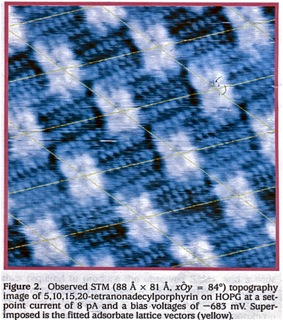 As an example of the more serious sort of scientific imaging we reproduce here a picture of atomic structure from an article in The Journal of Physical Chemistry Letters, 2011, 2, 62-66: ‘Atomic-Resolution Kinked Structure of an Alkylporphyrin on Highly Ordered Pyrolytic Graphite.’ Authors: Yiing Chin, Dwi Panduwinata, Maxine Sintic, Tze Jing Sum, Noel S. Hush, Maxwell J. Crossley, Jeffrey Reimers. Affiliations: the School of Chemistry and the School of Biomolecular Sciences, The University of Sydney, NSW 2006, Australia.
As an example of the more serious sort of scientific imaging we reproduce here a picture of atomic structure from an article in The Journal of Physical Chemistry Letters, 2011, 2, 62-66: ‘Atomic-Resolution Kinked Structure of an Alkylporphyrin on Highly Ordered Pyrolytic Graphite.’ Authors: Yiing Chin, Dwi Panduwinata, Maxine Sintic, Tze Jing Sum, Noel S. Hush, Maxwell J. Crossley, Jeffrey Reimers. Affiliations: the School of Chemistry and the School of Biomolecular Sciences, The University of Sydney, NSW 2006, Australia.

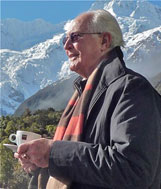 An Australian writer living in Sydney, Roger Sandall is the author of The Culture Cult (2001), a study of romantic primitivism and its effects. His work has appeared in a number of places including Commentary, The American Interest, Encounter, The New Criterion, The American, Sight and Sound, Quadrant, Art International, The New Lugano Review, The Salisbury Review, Merkur, Mankind, Visual Anthropology, and Social Science and Modern Society.
An Australian writer living in Sydney, Roger Sandall is the author of The Culture Cult (2001), a study of romantic primitivism and its effects. His work has appeared in a number of places including Commentary, The American Interest, Encounter, The New Criterion, The American, Sight and Sound, Quadrant, Art International, The New Lugano Review, The Salisbury Review, Merkur, Mankind, Visual Anthropology, and Social Science and Modern Society.